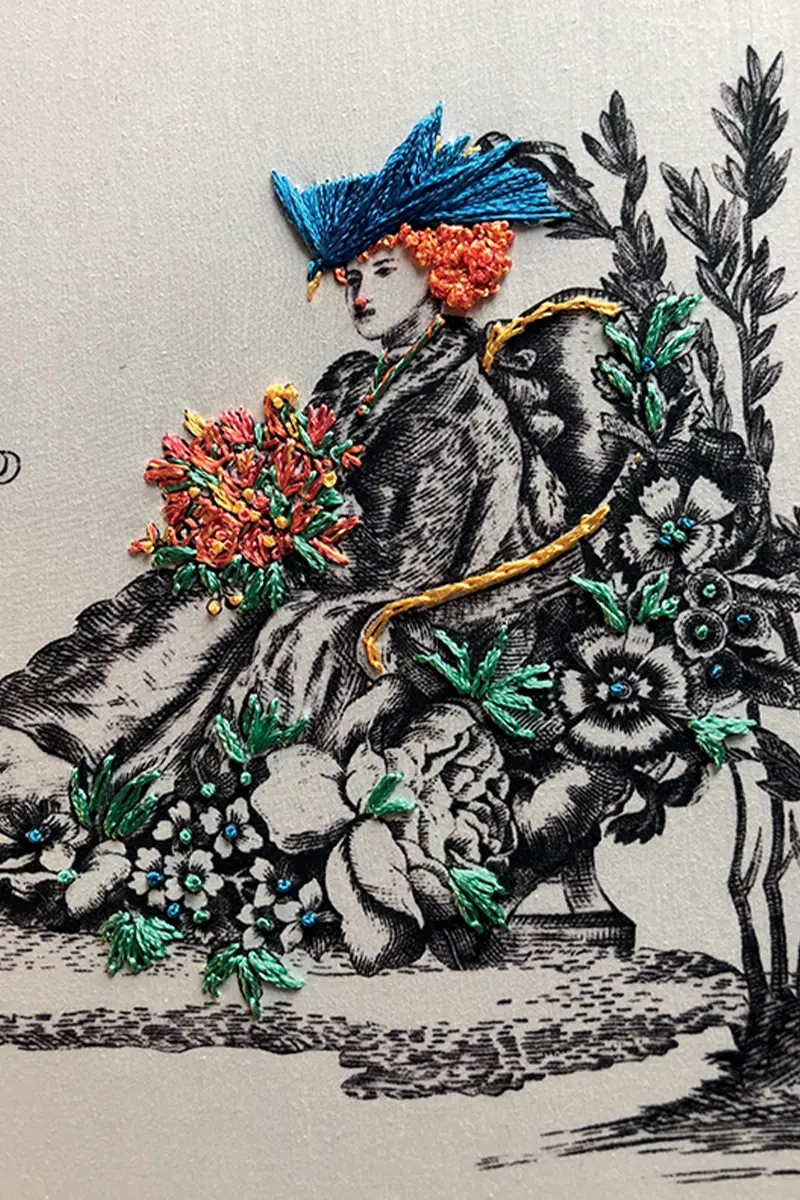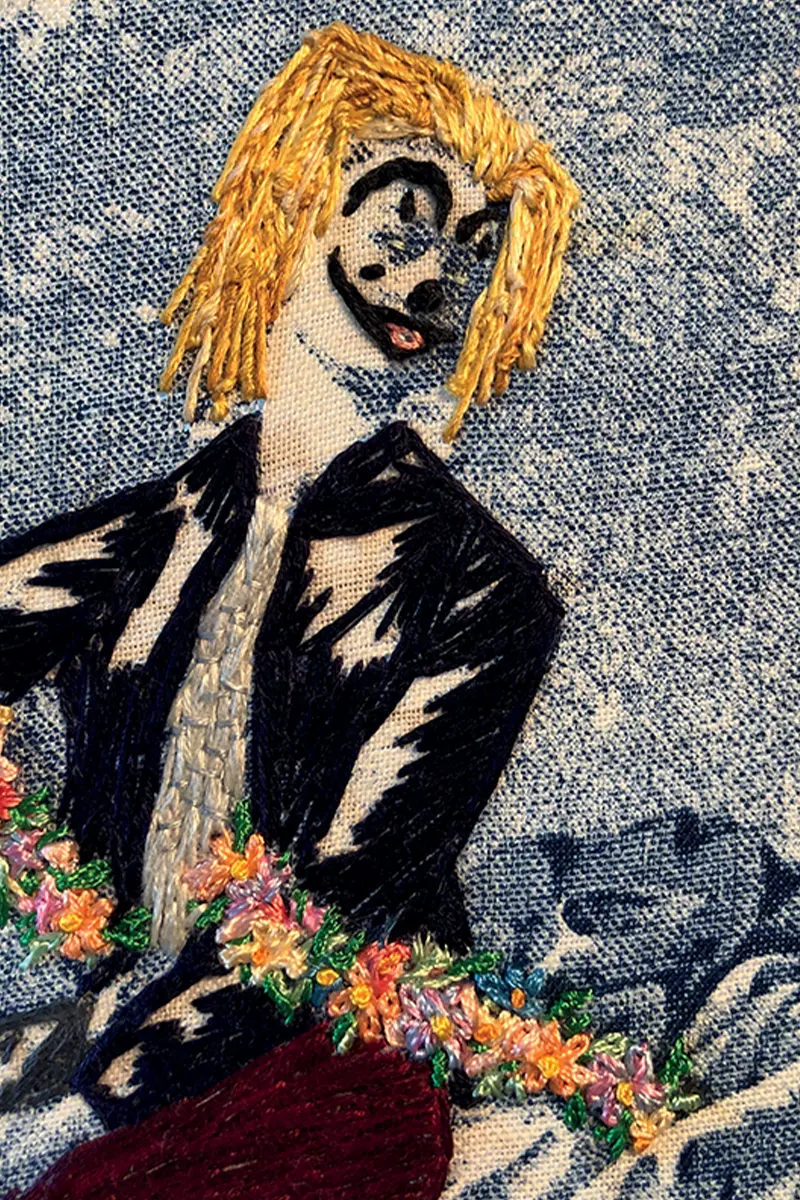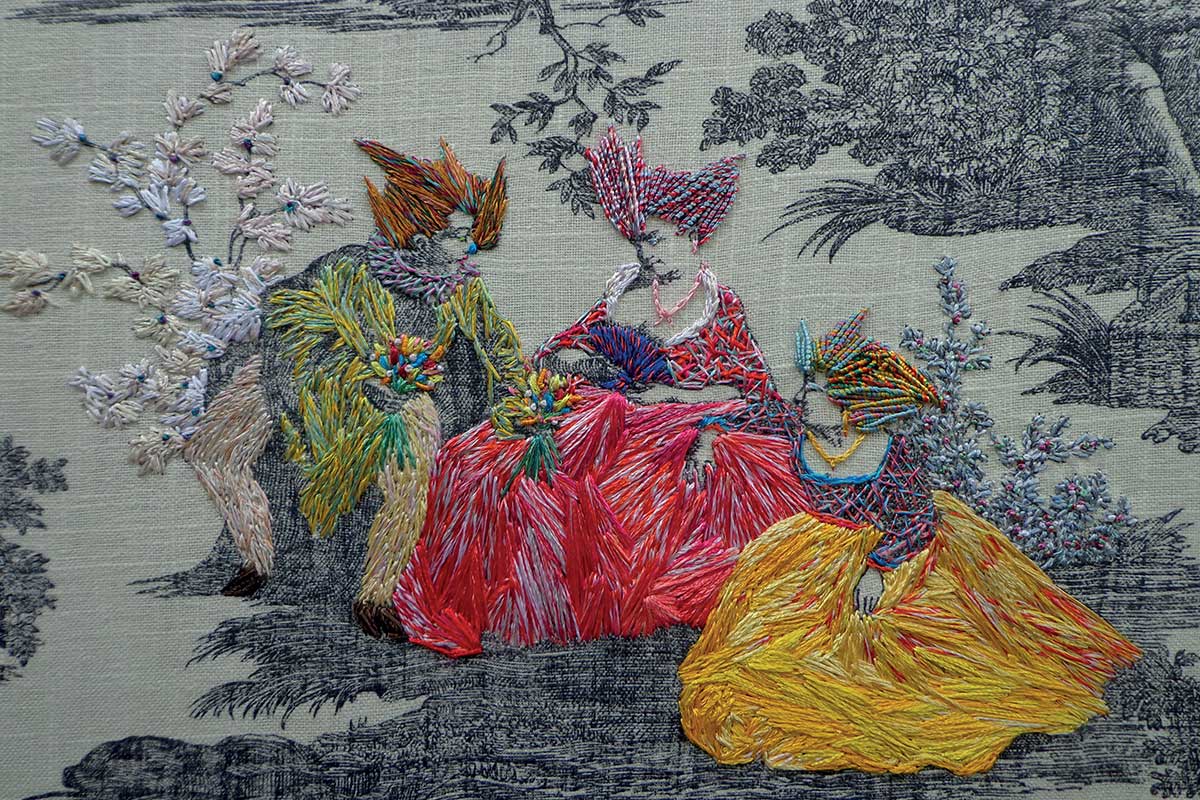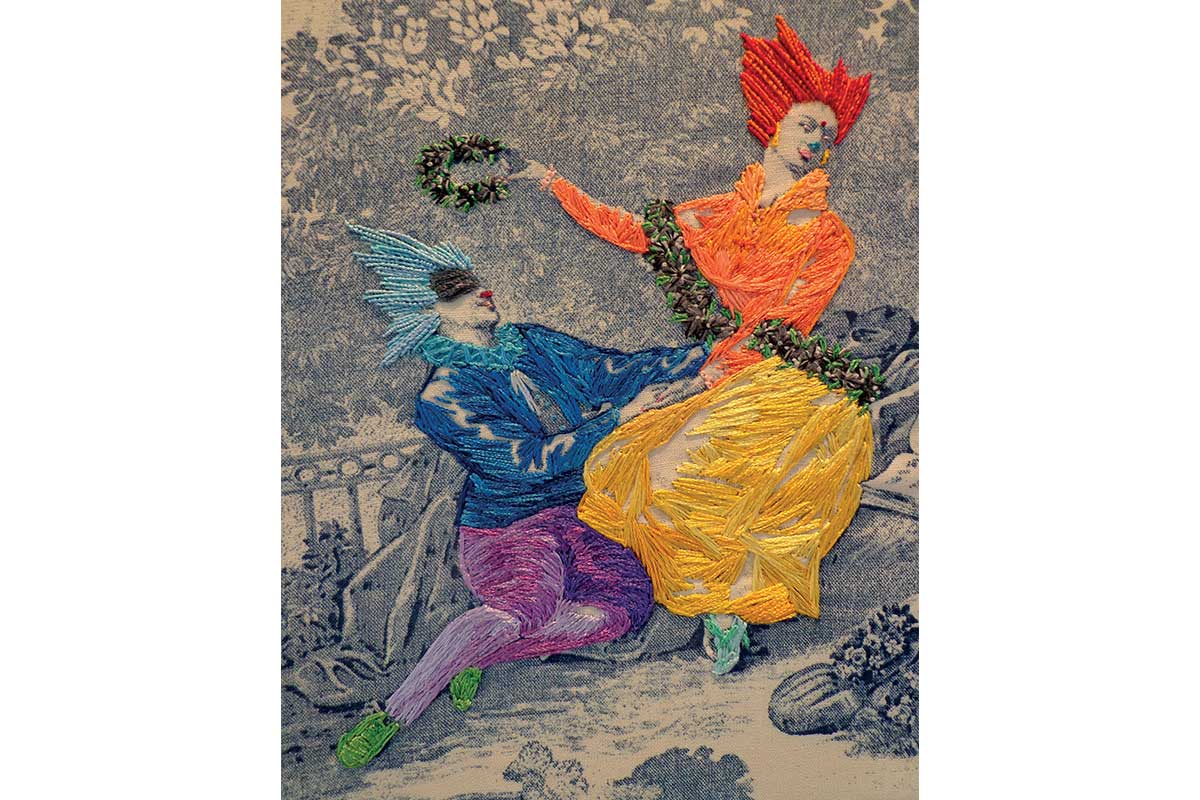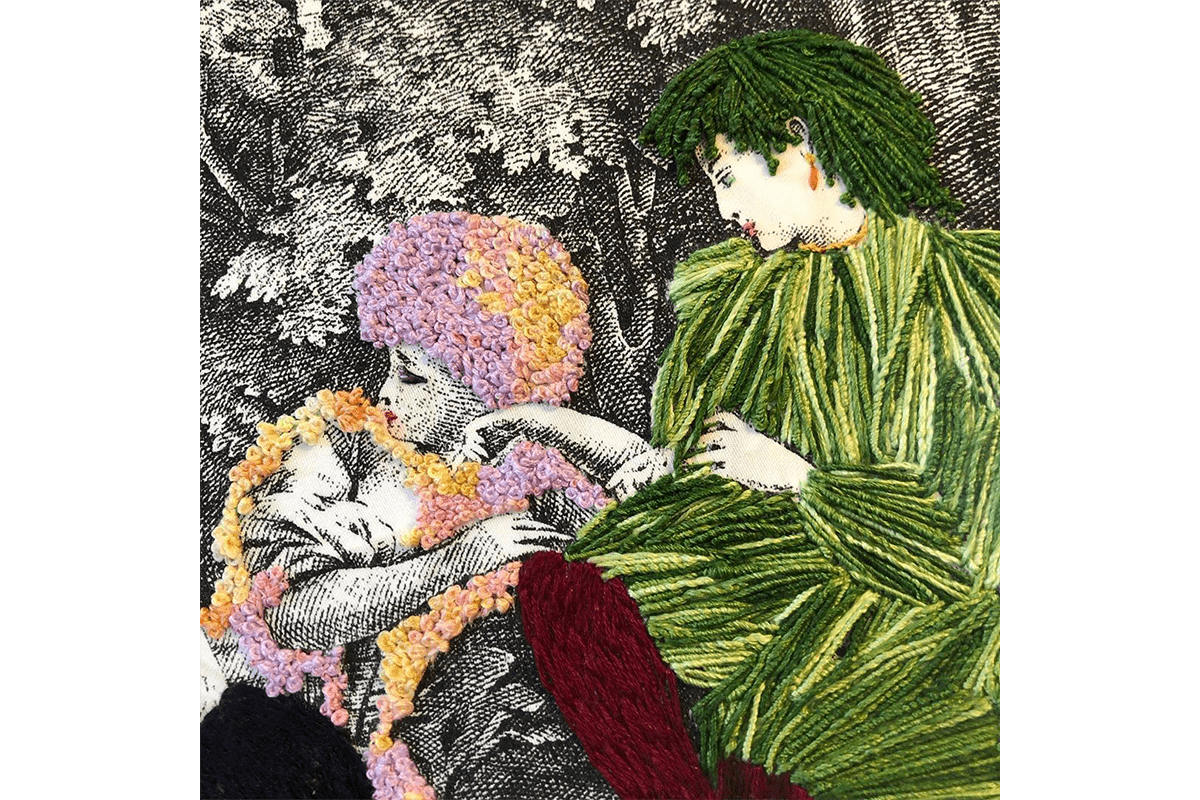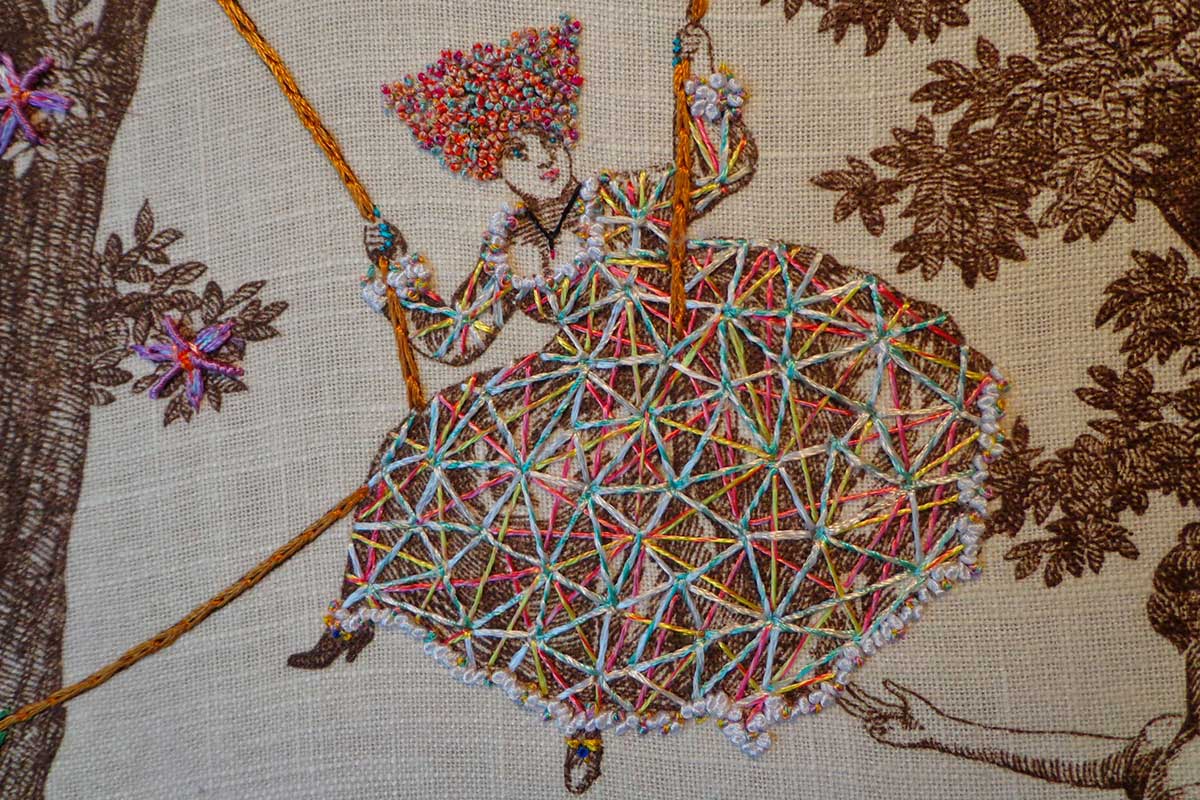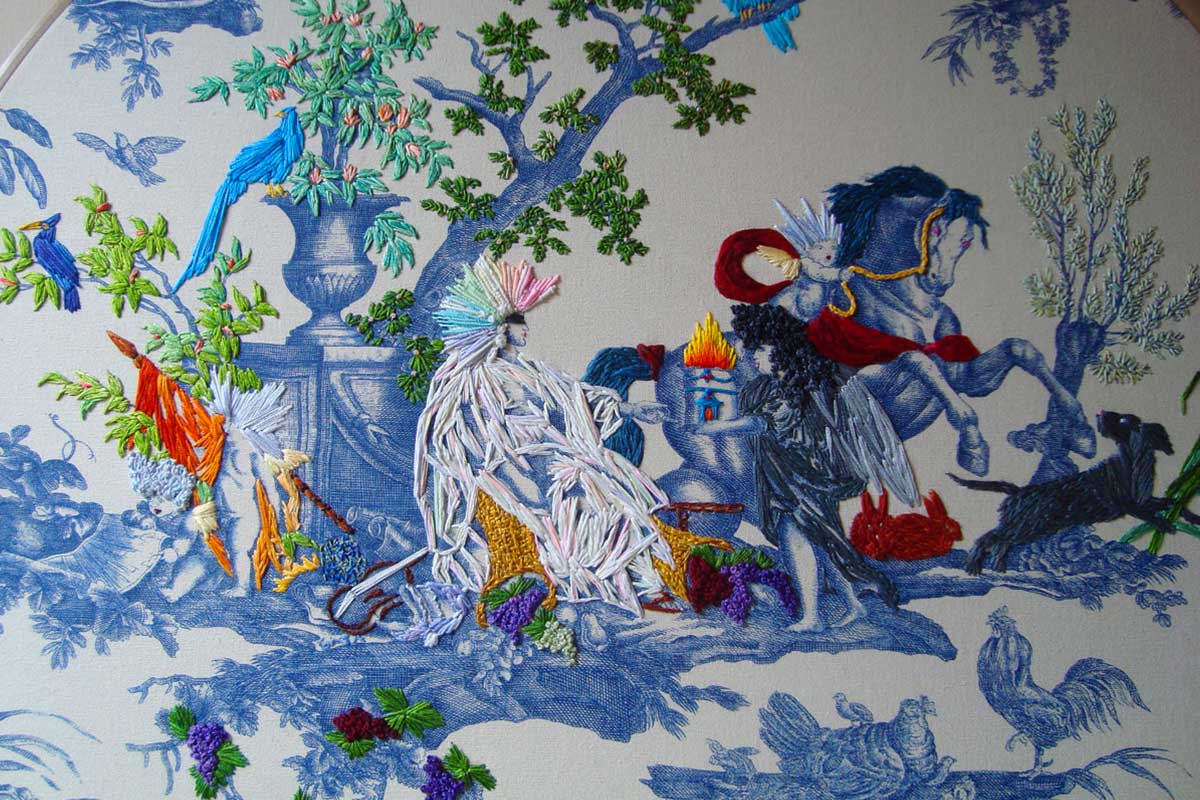«Chinoiserie possesses a sense of wonder, even if tinged by some sadness. I start from this, to express the amazement it communicates to me» – Richard Saja made the toile of joy from the toile de Jouy
Toile De Jouy
Toile De Jouy – literally means cloth from Jouy-en-Josas, a village not far from Versailles. It’s a fabric from 1770, and Christophe Philippe Oberkampf was the first to experiment with printing patterns onto it. Traditionally, different shades of reds and pinks were used, alternated with greens and blues, not forgetting black and white, with grey nuances.
A fantasy stitched on material depicting travel, the first signs of orientalism illustrating far away traditions. Love stories told within bucolic scenes. The toile de Jouy becomes the ‘toile of joy’ when it passes through the hands of Richard Saja.
Richard Saja embroidery artist
His Embroidered pieces take on bizarre dimensions. «Chinoiserie possesses a sense of wonder, even if tinged by some sadness. I start from this, to express the amazement it communicates to me». A knight wearing a mask has a Mohawk to court the young lady wearing a cobweb skirt with the tip of her nose painted blue.
Richard Saja sabotages the pattern with his needle – of both the fabric and the story. Its beauty makes a mockery of reality and calls into question our certainties. «Although it is already full of imagery, the toile is destined to disappear. It acts as a framework in which each element can no longer be recognized due to the repetition of the images. My work breaks this pattern».
The interaction between print, colors, and texture is unlimited. By selectively making all its small areas more beautiful, the toilet’s historical use is reversed. The times are distorted. «The anonymity of the print is interrupted, and becomes a new context». Like the pages of a black and white book begging for color.
Why embroidery and not painting?
«Necessity. I sold cushions and had to keep up with their production. It was a creative outlet. When I picked up a needle, I found the solution for my compulsive obsessions and the general unpleasantness I felt. With no talent to be a painter, I discovered that needle and floss allowed me to obtain very similar results and that I had a gift for this instead».
Maybe it runs in the family. «Some distant relatives owned furniture shops in Italy; they were woodcarvers. One of their descendants, a dear spinster aunt I called ‘the Lady’, worked as an assistant designer here in New York. I don’t know if it’s my nature, nurture, or neither, but I had been creative from an early age. It took some time for me to find my artistic craft».
And if you weren’t an artist. «As a child, I wanted to be a rockstar or one of those lost children in Peter Pan – or the fox or the skunk.» And if you were. «Piero Fornasetti. I feel connected to his work. He has given tangible humor to a field of work that takes itself far too seriously. I can only hope to get close to having his carefree spirit and elegance».
Historically Inaccurate Decorative Arts
The Fabric presents pastoral landscapes, but Richard Saja over stitches them with another story and imaginary characters. There’s the shadow man and the green man. The hairy man, fire heads, the universal mother. The lost children of Peter Pan and the sleeping rabbit from Goodnight Moon. Embroidering figures covered in fur is a meditative experience – you can lose yourself in a Yeti or a Sasquatch.
These were his childhood obsessions – still, today, Beauty and the Beast remains his favorite fairy tale. What was solid arcadia became a parallel universe, an upturned world. «Toile is a challenge. You have to invent something new each time. The original concept was to embroider Maori face tattoos onto the eighteenth-century figures».
An art born from a temporal mix-up. My company’s name doesn’t lie – Historically Inaccurate. «I began embroidering in the late Nineties; before that, I worked in the advertising industry. I watched how people read the printed signs during the trade fairs I attended. Confusion became comprehension, enjoyably».
How to create an embroidery design
The Creative process is almost improvised. He doesn’t have everything already clear in his mind. Usually, around midday, he sits holding an empty toile and lets the magic happen. His fingers are spontaneous, one of the reasons he doesn’t like working on commission. He has no specific image in his head – «for that, it’s enough to hire an agile-fingered monkey».
Embroidery and technology are a contradiction. He’s tried to use mechanical methods and smart fabrics, but in the end, he made a conscious choice to do all his work alone and by hand. «Technology imposes what is possible while history imposes what is practical. Machine embroidery will never be able to mimic human body movements». A fan of traditional art, he can relaunch old-style embroidery with a touch of irony and challenge the spectator to redefine its meaning.
«I like to think that upon seeing one of my pieces, someone will then delve into the history of toile de Jouy». The threads interweave like a game of complements and contradictions intent on the union of one with the other. This way, embroidery digs into human interaction and introduces ‘the other’ into a context that isn’t his. Each little decoration is a motive for acceptance, challenging the idea of difference – «The message is not pedantic, but it’s there».
An Anecdote. «My first large-scale project. I was embroidering ‘Life on the Mississippi’ to be hung on the Commanders Palace reception walls in New Orleans. A vignette in the pattern depicted a table in a wood surrounded by men and women who were raising their glasses in a toast. I transformed them into clowns with absurd wigs, using bright colors and red noses. The client asked me to remove the clown noses. For years, I wondered why the noses and not the wigs».
Richard Saja
Artist making work in Catskill, New York. After first attending the University of the Arts in Philadelphia to study surface design, he devoted his studies to the great books of Western Civilization at St Johns College in Santa Fe, NM and received a BA as a math and philosophy major. After a brief stint working as an art director on Madison Ave., all his interests coalesced and a small design firm, Historically Inaccurate Decorative Arts, was born in the early aughts.
Toile De Jouy
Christophe Philippe Oberkampf was the first to experiment with cloth printing in 1770: the toile de Jouy originated in France. From the name of the village Jouy-en-Josas, not far from Versaille.









